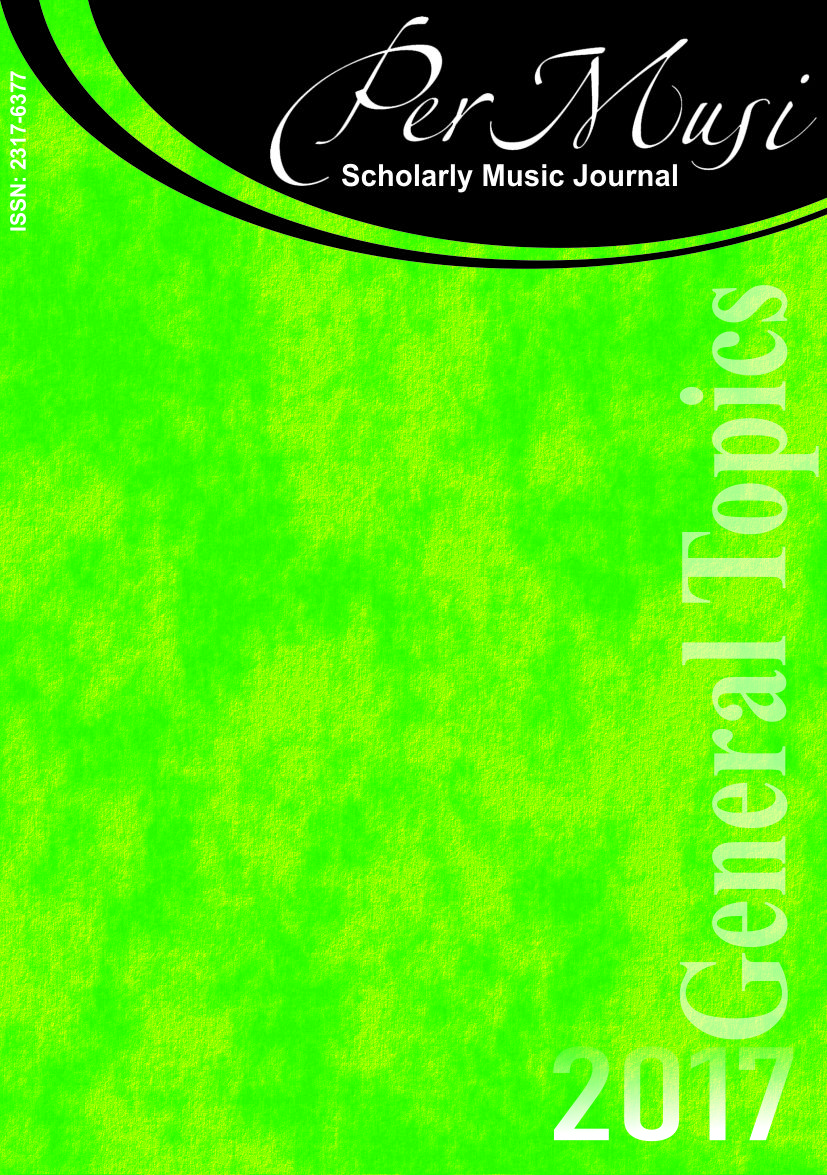Hermeto Pascoal’s time
the simultaneity of events in “Mestre Radamés” and its context
DOI:
https://doi.org/10.35699/2317-6377.2017.5184Keywords:
Hermeto Pascoal, Musical Rhapsody, Brazilian Music, Harmonic Rhythm, Popular MusicAbstract
This article aims to demonstrate harmonics, phraseological aspects and formal procedures that structure the piece Mestre Radamés by Hermeto Pascoal (1936). From the recording reference (PASCOAL, 1984) I describe the processes involved in the mentioned aspects, drawing from the division and enumeration of phrases, as well as the indication on the score of its harmonic chords and rhythm. Mestre Radamés unfolds in 22 successive musical phrases without repetition, all belonging to the same tonality, a process that can be termed as "rhapsodic". Associated with it, there is a rich amalgamation among bass, drums and chords associated with the arrangement of the piece, which was developed by other researchers, but adds to the understanding of the object. Furthermore, the article seeks, by one hand, to mention the inclusion of the work on the album and the album in the context of the composer´s production, which is the one of the 1980s and the series of albums recorded for the label Som da Gente. On the other hand, it seeks to conceptualize the work from the aesthetic point of view, in the pillars that guide the production of the author to check their relevance in his work.
Downloads
Published
Issue
Section
License

Except where otherwise noted, contents on this site are licensed under a Creative Commons - Atribuição 4.0 Internacional.


